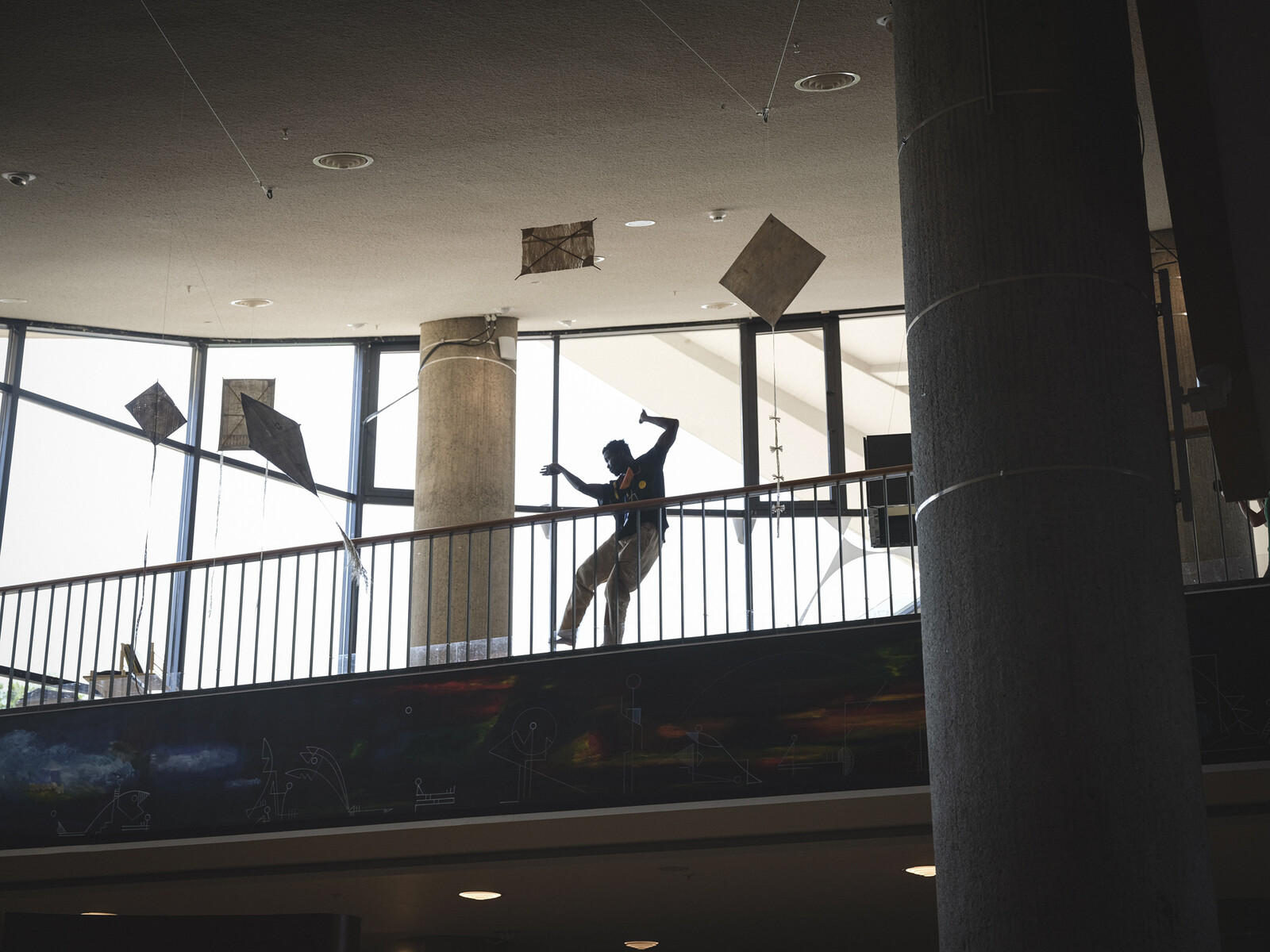The Gift is a collaboration between e-flux Architecture, Architekturmuseum der TUM in the Pinakothek der Moderne, and Taubman College of Architecture and Urban Planning, University of Michigan, within the context of the exhibition “The Gift: Stories of Generosity and Violence in Architecture” at the Architekturmuseum der TUM, curated by Damjan Kokalevski and Łukasz Stanek. It features contributions by Jasmina Cibic, GerHub, Leigh House, Ana Ivanovska and Damjan Kokalevski, Ye Liu, Bonaventure Soh Bejeng Ndikung, Kwasi Ohene-Ayeh and Łukasz Stanek, and Anya Sirota.
Architectural gifts are ubiquitous, from libraries funded by wealthy philanthropists and shelters donated by humanitarian organizations to farms paid for with development grants, mosques financed by Islamic foundations, stadiums handed over as part of diplomatic charm offensives, and more. Embedded in religious and imperial traditions of gift giving, architectural gifts shape urbanization processes around the world. Humanitarian, developmentalist, and diplomatic building-gifts mark expanding African, Asian, and South American metropolises and their hinterlands, just as philanthrocapitalists invest in cultural, social, and educational facilities abandoned by the shrinking welfare state in North America and Europe.
While every gift comes with a claim to singularity, architectural gifts permeate urbanism today. These gifts are neither remnants of older modes of urbanization, nor enclaves untouched by the global circulation of commodified resources. They are not antithetical to the dynamics of contemporary urbanization today, but rather count among its core components. The agency of gifted buildings expands towards the urban landscapes and lifeworlds from which these buildings emerge, to which they respond, and which they continue to impact for decades following construction.
Confronting the long, rich, and controversial scholarship on gifts with the practices of architecture raises a number of questions about the specificity of architectural gift-giving. How is the slow and complex process of producing and reproducing a gifted building shaped by the political and moral economies of gift giving?1 How is this production and reproduction impacted by the intertwinement between gift and commodity economies?2 What would a counter-gift be for a donated building?3 How are the temporalities of its afterlives structured by the rhythms of giving and counter-giving?4
Gifting buildings materialize power dynamics between the giver and the receiver, and enact conflicting modalities of generosity and violence. Often responding to urgent needs, architectural gifts may bring benefits, but they can also cause harm. A gifted buildings’ program, design, and materiality tend to be negotiated between the parties involved, in addition to labor relations on the construction site.5 Their motivations notwithstanding, donors are never in full control of the social bonds they create with the recipient. These bonds frequently persist after a building’s completion and impact the ways it is used, maintained, cared for, or neglected.
The effects of architectural gifts resonate within current debates about exacerbating inequalities among the forces shaping cities around the world. These inequalities are expressed or forged through architectural gifts, including asymmetrical access to resources, both natural and social, democratic deficits in decision-making pertaining to urban investments, politically driven upward redistribution of social wealth, and worsening environmental injustice. In a context where the capacity of both democracy and the market to achieve redistributive justice is widely called into question, the gift appears as both a promise and a threat.
Marcel Mauss, The Gift: Forms and Function of Exchange in Primitive Societies (London: Routledge and Keagan Paul, 2002); Marshall Sahlins, The Logic of the Gift: Toward an Ethic of Generosity, ed. Alan D. Schrift (London: Routledge, 1997).
Anna Tsing, “Sorting Out Commodities: How Capitalist Value Is Made Through Gifts,” HAU: Journal of Ethnographic Theory 3, 1 (2013): 21–43; Edward LiPuma and Moishe Postone, “Gifts, Commodities, and the Encompassment of Others” Critical Historical Studies 7, 1 (2020).
Kenneth E. Boulding, Martin Pfaff and Janos Horvath, “Grants Economics: A Simple Introduction,” The American Economist 16, 1 (1972), 19–28.
Pierre Bourdieu, The Logic of Practice (Cambridge: Polity, 1990); Nikolai Ssorin-Chaikov “On Heterochrony: Birthday Gifts to Stalin, 1949,” Journal of the Royal Anthropological Institute 12, no. 2 (2006): 355–75.
Łukasz Stanek, “Gift, Credit, Barter: Architectural Mobilities in Global Socialism,” Housing (e-flux Architecture, 2022), ➝.
The Gift is a collaboration between e-flux Architecture, Architekturmuseum der TUM in the Pinakothek der Moderne, and Taubman College of Architecture and Urban Planning, University of Michigan, within the context of the exhibition “The Gift: Stories of Generosity and Violence in Architecture” at the Architekturmuseum der TUM.










